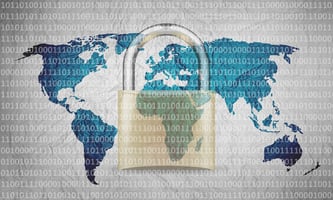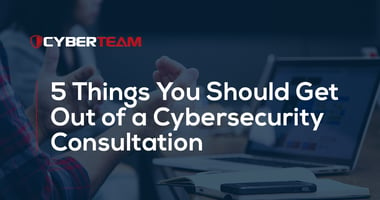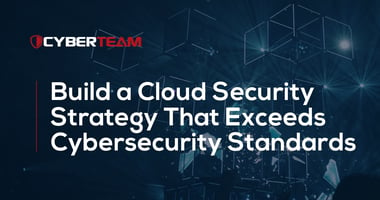It’s important to consider that having a cybersecurity risk assessment performed is not merely a...
How Cybersecurity Analysts Boost Remote Workforce Security Compliance

The rise of the remote workforce over the last decade delivered cost-effective benefits to growing organizations. Work-from-anywhere businesses have also been able to tap into talent beyond their previous commuter radius. But spreading out business networks strained the ability of IT departments to maintain security compliance with state and federal laws. Given the fact the remote workforce is here to stay, industry leaders would be well-served to onboard a third-party cybersecurity analyst to identify risks and eliminate vulnerabilities.
How Does a Remote Workforce Impact Cybersecurity?
In the 7 Top Trends in Cybersecurity for 2022, Gartner acknowledges that shifting to a remote workforce creates inherent problems that lead to security compliance issues. With 60% of knowledge positions going remote during the pandemic, and 18% not expected to return to the office, Gartner indicates new cybersecurity solutions are needed.
“These changes in the way we work, together with greater use of public cloud, highly connected supply chains and use of cyber-physical systems have exposed new and challenging attack surfaces,” the report states.
Compounding the remote workforce exposure, employees are creating what some call “shadow IT.” This refers to staff members who introduce unvetted devices into their home office. Unsanctioned laptops, iPads, desktops, and other devices insert unvetted endpoint technology into a business network. This practice not only expands the attack surface for hackers, it effectively turns otherwise secure defenses on the ear. Cybercriminals can now slip past these perimeter defenses with ease.
- Enterprise-Level Firewalls
- Antivirus Software
- Virtual Private Networks
- Intrusion Detection Systems
- Multi-Factor Authentication
Although cybersecurity was initially imagined as a way to protect data stored and transferred from within the castle wall, so to speak, endpoint security and other measures are mission-critical in a work-from-anywhere environment.
Top 3 Remote Workforce Security Compliance Risks
The managed IT and cybersecurity talent has thinned due to a shortage of trained, experienced people. Even when a company hires a strong in-house IT professional, a dispersed remote workforce makes building digital security something of a Herculean task. These are reasons why a business would be well-served to enlist the expertise of a cybersecurity analyst to identify and close security compliance gaps.
1: Expanded Attack Surfaces
In-house IT staffers simply cannot maintain a hardened attack surface across the endpoints used by a remote workforce. That’s primarily because technology departments have numerous responsibilities and must address productivity issues on a daily basis. The right cybersecurity firm can fill the void.
2: Lack of Cybersecurity Expertise
The cybersecurity skills shortage is a pervasive problem that subtly impacts businesses. According to a 2022 Cybersecurity Skills Gap Report, 60 percent of cybersecurity officers find it difficult to recruit people with adequate skills. Two-thirds acknowledge there is a shortage of qualified cybersecurity professionals. It’s unlikely small and mid-sized organizations would be able to hire someone with the requisite skills to secure an entire remote workforce. The solution is outsourcing to a managed IT and cybersecurity services provider.
3: Reduction in Remote Workforce Oversight
Companies that have pivoted to cost-effective Cloud-based systems stretch security compliance thin. Expanding the network perimeters in this fashion taxes the ability of supervisors and IT team members to monitor employee best practices. Although in-house staff members may not necessarily have the tools, experience, and time to check every endpoint, a cybersecurity analyst can run a thorough risk assessment. Knowing where gaps exist is the first step to restoring security compliance.
How Can a Cybersecurity Analyst Help Restore Security Compliance
When a remote workforce doesn’t have ongoing contact with professionals handling compliance services, the cybersecurity culture declines. Remote workers quickly lose focus and become susceptible to phishing schemes and other cyber-attacks. More than 90 percent of all data breaches are the result of an employee error. A cybersecurity analyst helps protect digital assets in the following ways.
- Evaluate Weaknesses: Every network has some level of vulnerability. A cybersecurity analyst identifies those pain points across the remote workforce.
- Reporting: A cybersecurity analyst provides a comprehensive report to business leaders, so they can make informed decisions regarding regulatory compliance.
- Configuring Tools: This may include integrated multi-factor authentication and vulnerability management software, among other actions.
Essentially, a cybersecurity analyst looks for standard and innovative ways to protect valuable and sensitive digital information and exceed security compliance standards.
What a Cybersecurity Analyst Can Do for Your IT Security
At CyberTeam, our managed IT and cybersecurity analysts have the experience and technology to protect your company from a data breach. We start by conducting a risk assessment to gain a clear understanding of your system’s strengths and vulnerabilities. Schedule a risk assessment with us and begin the process of exceeding security compliance mandates.





